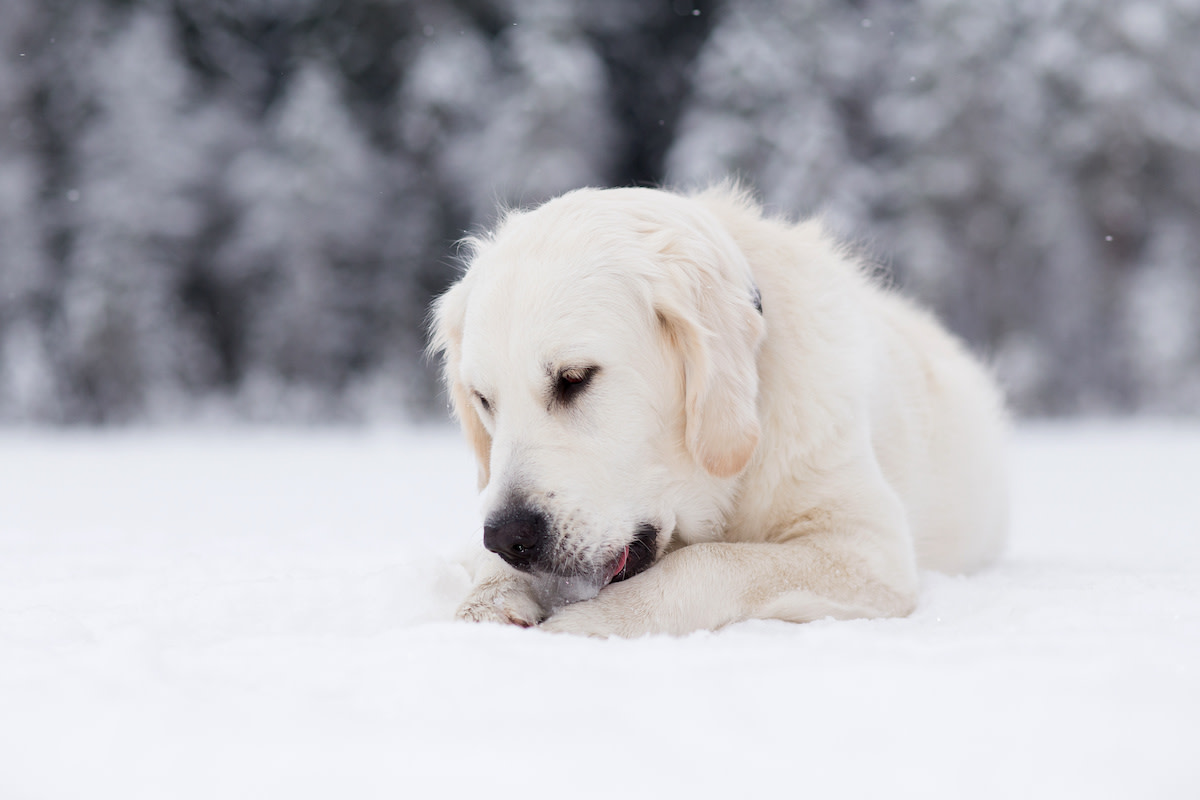Dogs Eating Snow: Is It Safe for Dogs to Eat Snow?
Written by MasterClass
Last updated: May 12, 2022 • 4 min read
Learn about the motivations behind dogs eating snow. Plus, read on for tips on how to discourage the behavior.
Learn From the Best
Why Do Dogs Eat Snow?
Dogs use their mouths (and noses) to explore what they find interesting—and that may include snow. If your dog discovers something they find appealing, there’s a good chance they’ll try to eat it or hold it in their mouth to determine if it’s edible. There are several other reasons your dog might want to eat snow:
- Thirst: It’s easy to believe that when your dog plays in cold weather, they won’t get as thirsty as they would on a hot summer’s day. However, any time your dog exercises, they lose fluids. A thirsty dog may eat snow to rehydrate. Always supply your dog with fresh water, and be sure to clean their drinking bowl at least once a day to avoid bacterial or fungal growth.
- Illness: Several health conditions can cause dehydration and drive your dog to snow eating, including diabetes, thyroid problems, kidney disease, Cushing’s disease, or any illness that leads to fluid loss via diarrhea or vomiting. If your dog isn’t feeling well, they may eat snow (or grass in warmer seasons) to induce vomiting and soothe a sour stomach. Talk to your vet to rule out any underlying conditions if the behavior persists.
- Instinctive canine behavior: Some dog breeds have an instinct to rehydrate by eating lots of snow, while others are driven to the behavior because it is fun. Others might enjoy the cool feeling and crunchy texture of snow. Any one of these could be a natural part of your dog’s personality and fuel their drive to eat snow.
Is It Safe for Dogs to Eat Snow?
The only snow that is truly safe for your dog to eat is fresh snowfall, and even in that case, it is best if they only eat a small amount. There are a few dangers you should keep in mind whenever your dog tries to eat snow:
- Toxic contaminants: Contamination is common in fallen or melted snow, especially in cities. Deicing agents, antifreeze, and ice melts used to clear roads and sidewalks of snow often may toxic chemicals such as sodium chloride (rock salt), potassium chloride, magnesium chloride, or calcium chloride. Ingesting too many of these chemicals can cause upset stomach, vomiting, diarrhea, electrolyte imbalance, seizures, or kidney failure. Do not let your dog eat the snow on urban streets. Additionally, consider outfitting your dog with booties before walking them down urban streets; while snow is generally safe for their paw pads, the chemicals applied to streets may irritate their paws.
- Poisonous mushrooms and rotting vegetation: Snow often hides rotting vegetation which may contain mycotoxins, naturally occurring toxins that certain molds produce. Mycotoxins can cause an upset stomach or neurologic symptoms in dogs. Similarly, certain mushrooms can be poisonous to dogs, causing stomach upset, neurological symptoms, or liver and kidney failure.
- Sharp objects: Snow can easily hide sharp objects such as broken glass, rocks, sticks, or trash, which can cause choking, intestinal damage, or harm to your dog’s paws or teeth.
- Hypothermia: Ingestion of excessive snow, even clean snow, lowers your dog’s body temperature, putting them at risk of hypothermia, a severe medical condition that can lead to heart failure. Keep snowy walks and play sessions brief and outfit your dog with warm clothing if needed.
How to Discourage Dogs From Eating Snow
Here are some preventative measures you can take to discourage your dog from eating snow:
- Keep an eye on your dog. The simplest way to keep your furry friend from eating snow is to watch them while they’re outside in wintry weather. If their behavior goes beyond just having fun or catching snowflakes, you can take action to prevent them from eating contaminated snow.
- Monitor the snow conditions. Avoid allowing your dog to eat dirty snow, namely snow or frozen water on the sides of roads or sidewalks or any location with a lot of vehicle activity that may contain harmful chemicals. Restrain them from eating any snow that isn’t pure, white, and freshly fallen. Avoid throwing snowballs at your dog, which will only encourage them to eat snow.
- Give them a chew toy or treat. A chew toy can protect your dog’s health by keeping their mind distracted and their mouth busy while in the snow. Chewing and licking are natural stress-reducing canine behaviors, so providing your dog with safe objects to chew is essential. If your dog seems intent on eating snow or drinking from puddles, a treat can refocus their attention on you.
- Use a leash. Keep your dog on a leash while outside to make it easier to direct them away from potentially contaminated snow. You can try a longer leash—such as a thirty-foot line—attached to a comfortable harness to offer your dog more freedom. Here’s how to measure a dog for a harness.
- Provide ample drinking water. Provide your dog with clean, fresh water, so they won’t feel the need to eat snow if they get thirsty.
- Check with your veterinarian if the behavior persists. If your dog continues to eat large amounts of snow, it could indicate an underlying condition or health problem. Watch for abnormal signs, like vomiting or drooling, and take your dog to the vet if you suspect they might be unwell.
Want to Learn More About Training the Goodest Boy or Girl?
Your dream of having a dog who understands words like “sit,” “stay,” “down,” and—crucially— “no” is just a MasterClass Annual Membership away. The only things you’ll need to train up a well-behaved pup are your laptop, a big bag of treats, and our exclusive instructional videos from superstar animal trainer Brandon McMillan.
